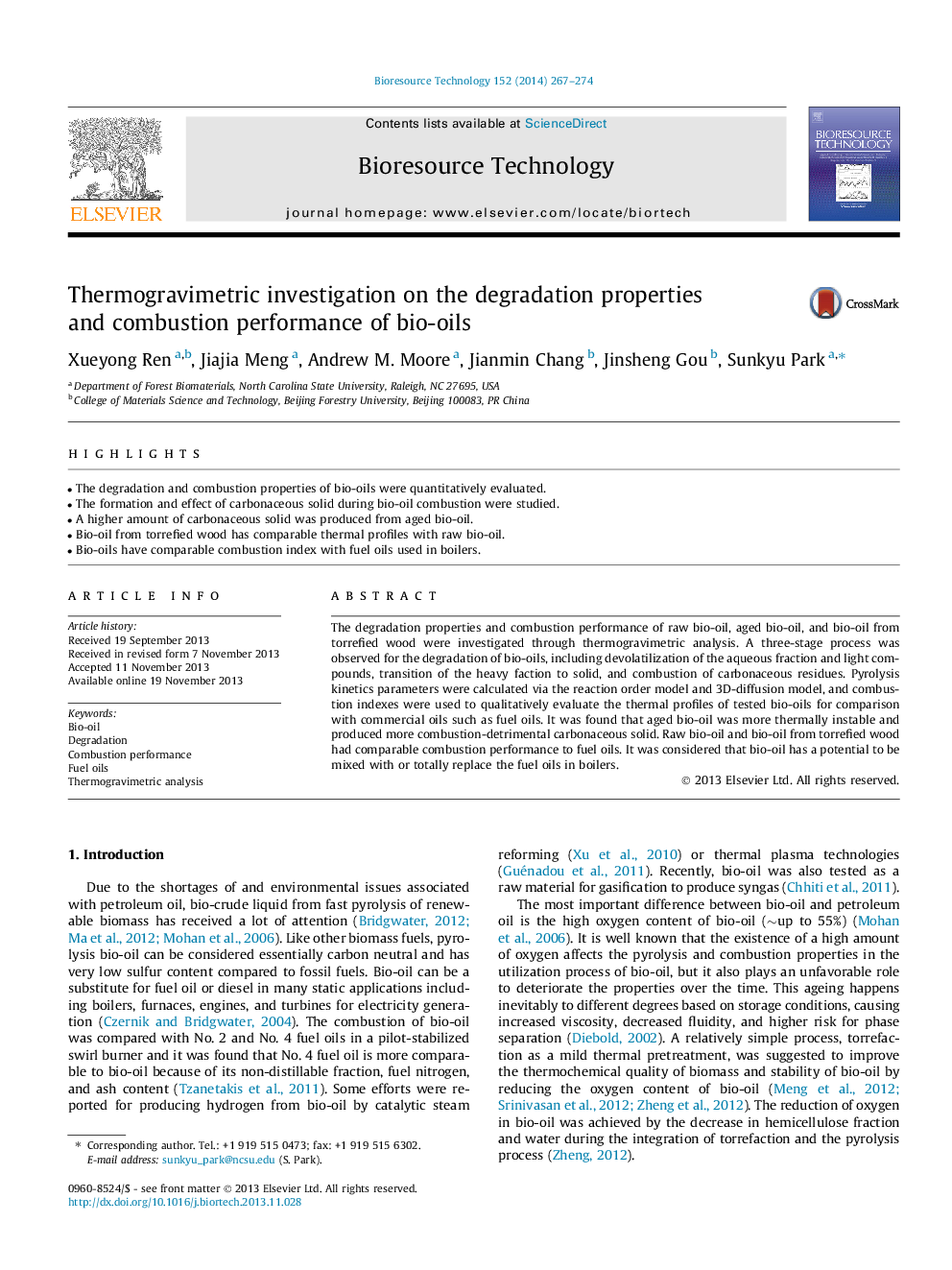| Article ID | Journal | Published Year | Pages | File Type |
|---|---|---|---|---|
| 7080119 | Bioresource Technology | 2014 | 8 Pages |
Abstract
The degradation properties and combustion performance of raw bio-oil, aged bio-oil, and bio-oil from torrefied wood were investigated through thermogravimetric analysis. A three-stage process was observed for the degradation of bio-oils, including devolatilization of the aqueous fraction and light compounds, transition of the heavy faction to solid, and combustion of carbonaceous residues. Pyrolysis kinetics parameters were calculated via the reaction order model and 3D-diffusion model, and combustion indexes were used to qualitatively evaluate the thermal profiles of tested bio-oils for comparison with commercial oils such as fuel oils. It was found that aged bio-oil was more thermally instable and produced more combustion-detrimental carbonaceous solid. Raw bio-oil and bio-oil from torrefied wood had comparable combustion performance to fuel oils. It was considered that bio-oil has a potential to be mixed with or totally replace the fuel oils in boilers.
Related Topics
Physical Sciences and Engineering
Chemical Engineering
Process Chemistry and Technology
Authors
Xueyong Ren, Jiajia Meng, Andrew M. Moore, Jianmin Chang, Jinsheng Gou, Sunkyu Park,
